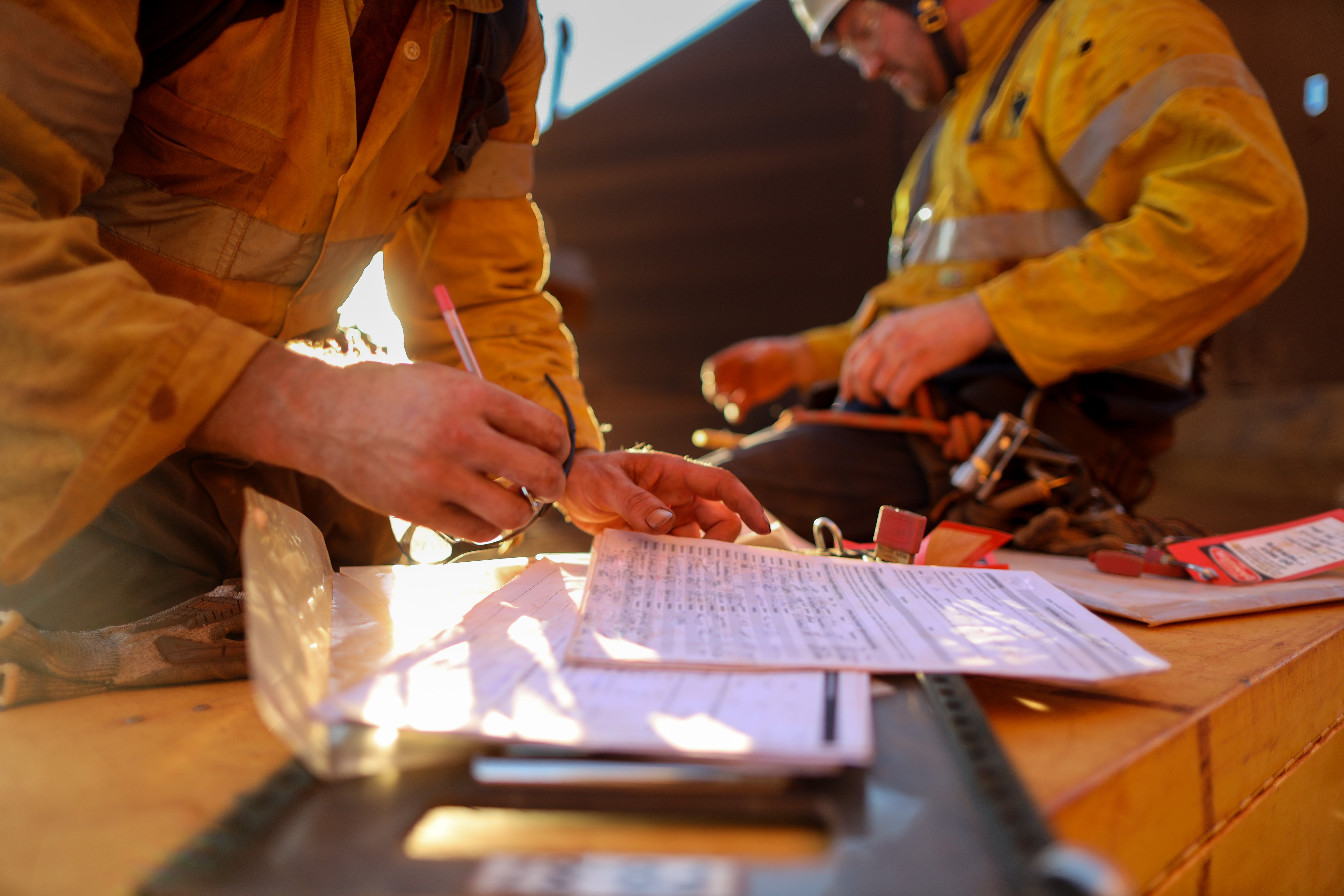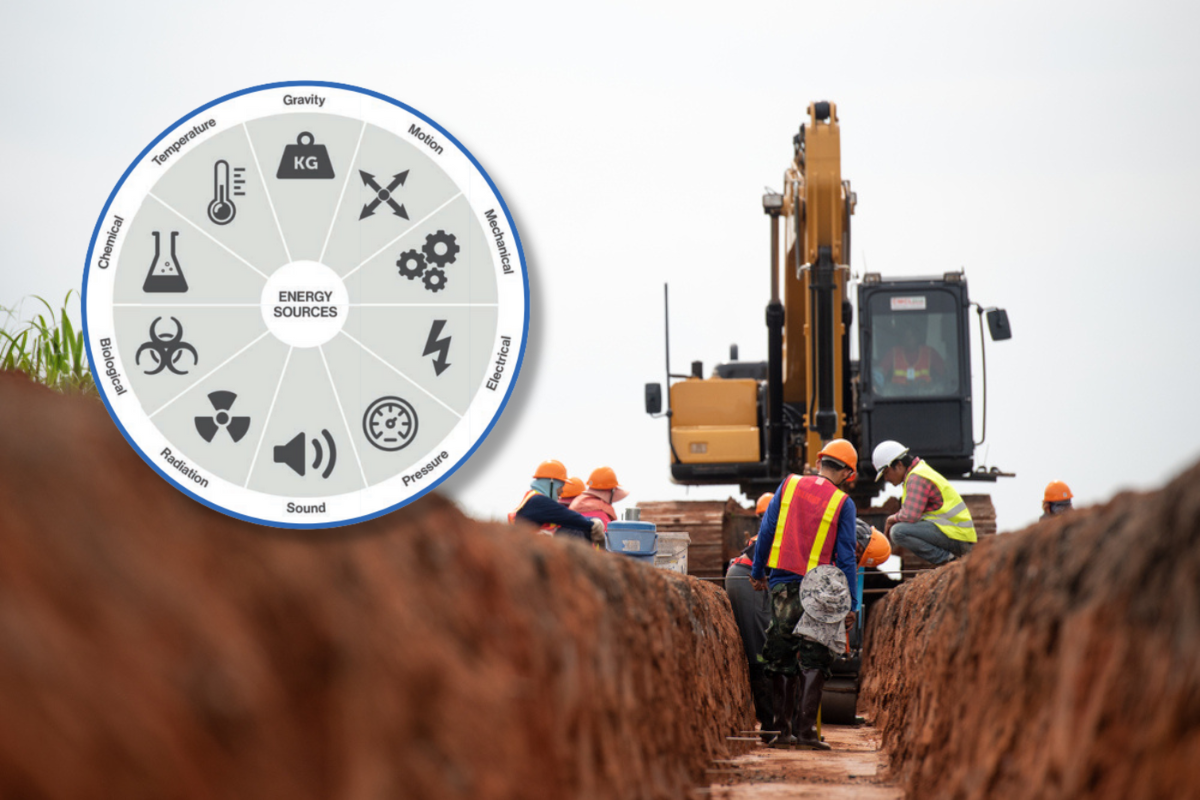This post is part of a series on energy-based hazard recognition. Access Part 1 here and Part 2 here.
High-energy hazards are the source of most serious injuries and fatalities (SIFs) on utility work sites. In recent years, environmental health and safety (EH&S) leaders at utilities have shifted their focus to controlling high-energy as a way to reduce SIFs.
In the first part of our series on energy-based hazard recognition, we introduced the Energy Wheel — a diagram used by EH&S managers that calls out 10 sources of energy on industrial worksites. In the second part, we went into detail on the first seven of the 13 high-energy hazards that utility workers face every day.
Today, we’re exploring the other six task-based hazards that expose utility workers to high amounts of hazardous energy — what they look like, what makes them high risk, and what you can do to control them.
13 High-Energy Hazards for Utility Workers (Part 2)
.png?width=106&name=HEH%20Icon%20Steam%20(1).png) High-Energy Hazard #8: Steam
High-Energy Hazard #8: Steam
People encounter steam every day, but rarely in strong enough concentrations to cause a SIF. On an industrial scale, though, steam presents a real danger to workers who encounter it.
Steam is a fundamental force in power generation. Both nuclear and fossil fuel plants rely on steam to drive the turbines that produce electricity. Pipefitters also deal with steam, which buildings may use as part of their heating and cooling systems. As water in these systems heats, it takes on energy and converts to steam at 212°F. In commercial systems that use large volumes of steam under pressure, this energy can transfer to workers, causing severe burns. In 2018, a steamfitter working at the University of Iowa died after falling into a massive steam leak. Steam under pressure can also pose a risk of explosion.
Critical Risk Controls:
- Ensure mandatory training for anyone working near sources of steam.
- Inspect personal protective equipment (PPE) and ensure it remains in good condition.
- Check and repair insulation prior to manipulating pipes and valves.
- Operate valves remotely where possible (e.g., power valves, drones, reach rods, etc.)
 High-Energy Hazard #9: Suspended Loads
High-Energy Hazard #9: Suspended Loads
A suspended load is anything a utility crew lifts above the ground (such as a beam or a pipe). The greater the mass of the load and its height above ground, the more potential energy involved in an incident — and the greater the hazard.
Utility workers see suspended loads daily as they use heavy equipment to lift construction materials. In some cases, they may even function as suspended loads themselves as they reach from telehandlers to trim vegetation or string cables.
Any suspended load has the potential to crush or strike a worker if something goes wrong, so the Occupational Safety and Health Administration (OSHA) requires defined hoisting routes to minimize exposure of employees. Even when an equipment operator is not moving the suspended load, no one beyond essential employees should stand within the fall zone.
Critical Risk Controls:
- Establish hoisting routes for moving loads
- Barricade workers from entry into fall zones and utilize spotters where needed
- Ensure that rigging equipment is rated for the load and/or utilize load limiting devices.
 High-Energy Hazard #10: Explosion
High-Energy Hazard #10: Explosion
Utility workers risk explosions from a range of sources — digging that strikes gas lines, improper labeling of reactive substances, damage to vehicle or welding equipment fuel sources, and even flammable atmosphere in confined spaces.
Explosions by definition are a vigorous release of energy. If uncontrolled, they present a significant risk of causing a SIF to any worker within their blast radius. In July 2022, two utility workers in Boston were injured when a transformer exploded during routine maintenance.
Because explosions occur suddenly and without warning, EH&S managers and workers must take extra diligence to identify any risk of explosions during their job hazard analysis — including contents under pressure or fuel containers near hot work zones.
Critical Risk Controls:
- Explore technological substitutions, such as drones, for tasks involving confined spaces that prevent escape from explosions.
- Call 811 to confirm locations of underground infrastructure before digging.
- Conduct hazardous materials training with any worker who may be exposed to reactive substances.
- Keep hot work, such as welding, away from sustained fuel sources.
- Install pressure relief devices on enclosed equipment containing fluids.
.png?width=108&name=HEH%20Icon%20Arc%20Flash%20(1).png) High-Energy Hazard #11: Arc Flash
High-Energy Hazard #11: Arc Flash
Arc flashes occur when a flashover of electric current diverts from its intended path and moves through the air from one conductor to another (or to the ground). They can arise from several sources, including dust, falling tools, accidental touching, condensation, material failure, corrosion, and faulty installation, according to OSHA.
Of course, an uncontrolled release of industrial electricity can contain enough energy to electrocute a worker. The severity of an arc flash injury varies based on the proximity of the worker to the electricity, the current involved, and the duration of contact.
Even when a worker survives an arc flash injury, they often never regain the same quality of life.
Critical Risk Controls:
- De-energize any circuits prior to commencing work.
- Adhere to National Fire Protection Association approach boundaries for energized equipment.
- Use insulated tools and personal protective equipment (e.g., rubberized gloves, flame-retardant clothing, etc.)
 High-Energy Hazard #12: Electrical Contact With Source
High-Energy Hazard #12: Electrical Contact With Source
The risk of electrical contact with sources is similar to an arc flash, but even more severe. In this case, utility workers sustain injuries when they become part of the electrical circuit. Similar to an arc flash injury, the risk of SIF is high and its severity varies based on the electrical current and the duration of contact involved.
Electrical sources can convey even larger amounts of energy than arc flashes because workers may remain exposed to the source continuously, rather than a brief flashover. Electricity can cause workers’ muscles to contract, preventing them from pulling away from the source and, in turn, increasing the duration of the exposure.
Depending on the voltage, current, and duration of contact, fatal electrocution is possible. Even in non-fatal incidents, though, the injuries from electric shock and burns can be severe.
Critical Risk Controls:
- De-energize any circuits prior to commencing work.
- Install proper physical barriers between people and electrical equipment.
- Use insulated tools and personal protective equipment (e.g., rubberized gloves, non-conductive ladders, etc.)
 High-Energy Hazard #13: Excavation or Trench
High-Energy Hazard #13: Excavation or Trench
Utility work often involves digging and trenching, which pose a unique set of hazards for industrial workers. Gas, water, sewer, broadband, and increasingly power lines are often buried underground. To maintain them, workers need to create and enter trenches — confined spaces with a risk of collapse.
“A small amount of dirt may not seem dangerous, but one square yard can weigh more than 3,000 pounds—the weight of a compact car. This small amount of dirt is enough to fatally crush and suffocate workers,” says the National Institute for Occupational Safety and Health (NIOSH) webpage on trenching and excavation. Workers rarely survive trench collapses, which is why OSHA considers the work among the most dangerous construction activities. To raise awareness of these hazards, the National Utility Contractors Association has declared June as Trench Safety Month.
Fortunately, the NIOSH indicates that trench collapses are entirely preventable through correct use of a protective system, such as trench shields or hydraulic shoring. Even so, 373 trenching fatalities occurred from 2003 to 2017.
Critical Risk Controls:
- Ensure a safe path of entry and exit to the trench (via ladders, stairs, ramps, etc.)
- Implement a trench protective system that prevents cave-ins.
- Place excavated material (spoils) at least two feet away from the trench.
***
Together with the seven hazards set out in our previous post, these hazards present the greatest risk of SIFs for utility workers. Awareness of these hazards, along with application of the Energy Wheel, can help workers and EH&S managers remain alert to the real risks they encounter on the job.
Taking a systematic approach to identify the 13 high-energy hazards goes a long way toward preventing safety incidents, so workers can go home safely every day.
Want to know more about utility safety? Subscriber to our newsletter below for a weekly update on stories you may have missed.

